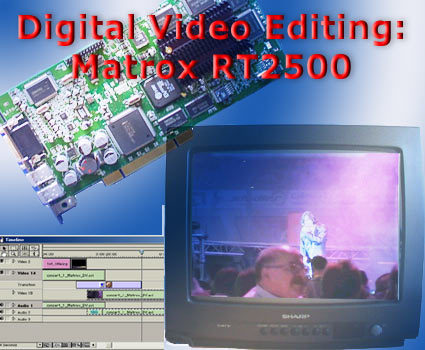Digital Video Editing: The Matrox RT2500
Analog Technology Is A Dead-end
With the proliferation of digital technologies, numerous hobbyists and semi-professional video enthusiasts have turned to filming with digital DV cameras, such as the Sony DCR-PC100E . This shift has increased demand for digital video editing solutions. Digital video editing allows filmmakers to add a professional touch to raw material by inserting transitions between separate clips, dubbing, titles and credits. We've already tested the Pinnacle Studio DV Plus , which targets the low-end segment, and the Matrox RT2000 card , the predecessor to the RT2500. We also have the second part of our Video Capture article coming up very shortly, which will compare the RT2500 to other video capture cards. In this article, we are going to focus on the video editing features of the Matrox product.
What sets the Matrox RT2500 apart from the RT2000 is its compatibility with 3D graphics adapters from other manufacturers. You are no longer limited to the "Matrox G400 Special Edition", which provides below-average 3D features. Instead, you can combine the RT2500 with a GeForce2/3 or a Radeon graphics card, or other cards. Matrox has also begun bundling drivers for the more stable Windows 2000 operating system with this card. Editing videos under Windows 98 or ME used to cause system instability once the amount of data mushroomed. The focus of this card has been placed on real-time video effects. Transitions, page turns and 3D titles can be inserted in real-time. Such a feature eliminates the long waits required with classical rendering calculated by the CPU - it often takes up much more time than the effects themselves.
Despite the emphasis in digital processing, this card also processes analog video and audio signals from older cameras. You can even connect VHS VCRs to the RT2500. First, however, the signals have to be captured (i.e. converted into digital signals). The card uses the video formats DV or MPEG-2 directly. Any other formats have to be converted using a file converter.
Get Tom's Hardware's best news and in-depth reviews, straight to your inbox.
Current page: Analog Technology Is A Dead-end
Next Page The RT2500 Card Up Close And Personal
